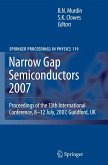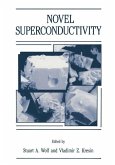This series of books, which is published at the rate of about one per year, addresses fundamental problems in materials science. The contents cover a broad range of topics from small clusters of atoms to engineering materials and involve chemistry, physics, materials science, and engineering, with length scales ranging from Ångstroms up to millimeters. The emphasis is on basic science rather than on applications. Each book focuses on a single area of current interest and brings together leading experts to give an up-to-date discussion of their work and the work of others. Each article contains enough references that the interested reader can access the relevant literature. Thanks are given to the Center for Fundamental Materials Research at Michigan State University for supporting this series. M. F. Thorpe, Series Editor E-mail: thorpe@pa. msu. edu East Lansing, Michigan V PREFACE It is hard to believe that not quite ten years ago, namely in 1991, nanotubes of carbon were discovered by Sumio Iijima in deposits on the electrodes of the same carbon arc apparatus that was used to produce fullerenes such as the "buckyball". Nanotubes of carbon or other materials, consisting ofhollow cylinders that are only a few nanometers in diameter, yet up to millimeters long, are amazing structures that self-assemble under extreme conditions. Their quasi-one-dimensional character and virtual absence of atomic defects give rise to a plethora of unusual phenomena.
Bitte wählen Sie Ihr Anliegen aus.
Rechnungen
Retourenschein anfordern
Bestellstatus
Storno







